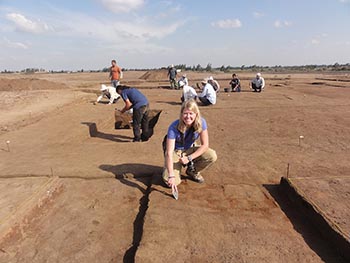Sarah Parcak, Ph.D., an associate professor of anthropology at the University of Alabama at Birmingham (UAB), has been named a National Geographic Fellow.
 Sarah Parcak, Ph.D. Parcak is a pioneer in the emerging field of satellite archaeology and an expert in remote-sensing. She uses satellite imagery to identify ancient sites around the world that were thought to be lost forever.
Sarah Parcak, Ph.D. Parcak is a pioneer in the emerging field of satellite archaeology and an expert in remote-sensing. She uses satellite imagery to identify ancient sites around the world that were thought to be lost forever.
As a fellow, Parcak will work to “leverage emerging technologies relating to satellite archaeology in high-profile geographic areas critical to human history and cultural preservation,” according to the National Geographic site. She also will work to engage the public in interpreting “big data,” such as large quantities of satellite imagery.
In addition, Parcak plans to create innovative and crowd-sourced experiences for finding and mapping archaeological sites using satellite imagery and use state-of-the-art remote-sensing technologies to preserve sites and combat looting, she told National Geographic.
Terry Garcia, executive vice president for Mission Programs, has said Parcak embodies “the new age of exploration that the National Geographic Society is celebrating in its 125th year.” She also said that she is honored to work with Parcak, whom she called a pioneer in her field.
Parcak, a 2012 TED Fellow, is the first Egyptologist to use multi-spectral and high-resolution satellite-imagery analysis to identify previously unknown archaeological sites. She has discovered more than 3,100 archaeological settlements, thousands of tombs and 17 possible pyramids in Egypt.
Parcak’s research has reinvigorated exploration for ancient sites throughout the Middle East and elsewhere. She is a member of the 2012 class of National Geographic Emerging Explorers and was highlighted in the February 2013 National Geographic “New Age of Exploration” section.